Backcountry skiing gear isn’t one-size-fits-all. Beginners need lightweight, easy-to-use equipment to build confidence, while experts require gear designed for high performance in tough terrain. Whether you're just starting or tackling steep descents, the right setup makes all the difference.
- Beginners: Focus on simplicity and safety. Compact options like Snowfeet Mini Ski Skates (38 cm, $250) are easy to control, work with regular winter boots, and fit in a backpack. Add avalanche safety gear (beacon, shovel, probe) and basic navigation tools for a safe start.
- Experts: Precision and control are key. Advanced Snowfeet models like Skiblades (99 cm, $675) handle steep slopes and deep snow. Pair with an avalanche airbag pack, crampons, and a satellite messenger for challenging trips.
Quick Tip: Snowfeet gear stands out for being lightweight, portable, and beginner-friendly, while still delivering high performance for seasoned skiers. Ready to hit the slopes? Let’s dive into the details!
Backcountry Ski Gear: Comprehensive Guide
Beginner Backcountry Gear Checklist
Starting backcountry skiing? Keep it simple, lightweight, and safe. The right gear will help you gain confidence while protecting you from the unpredictable conditions of the mountains.
Snowfeet* Gear for Beginners
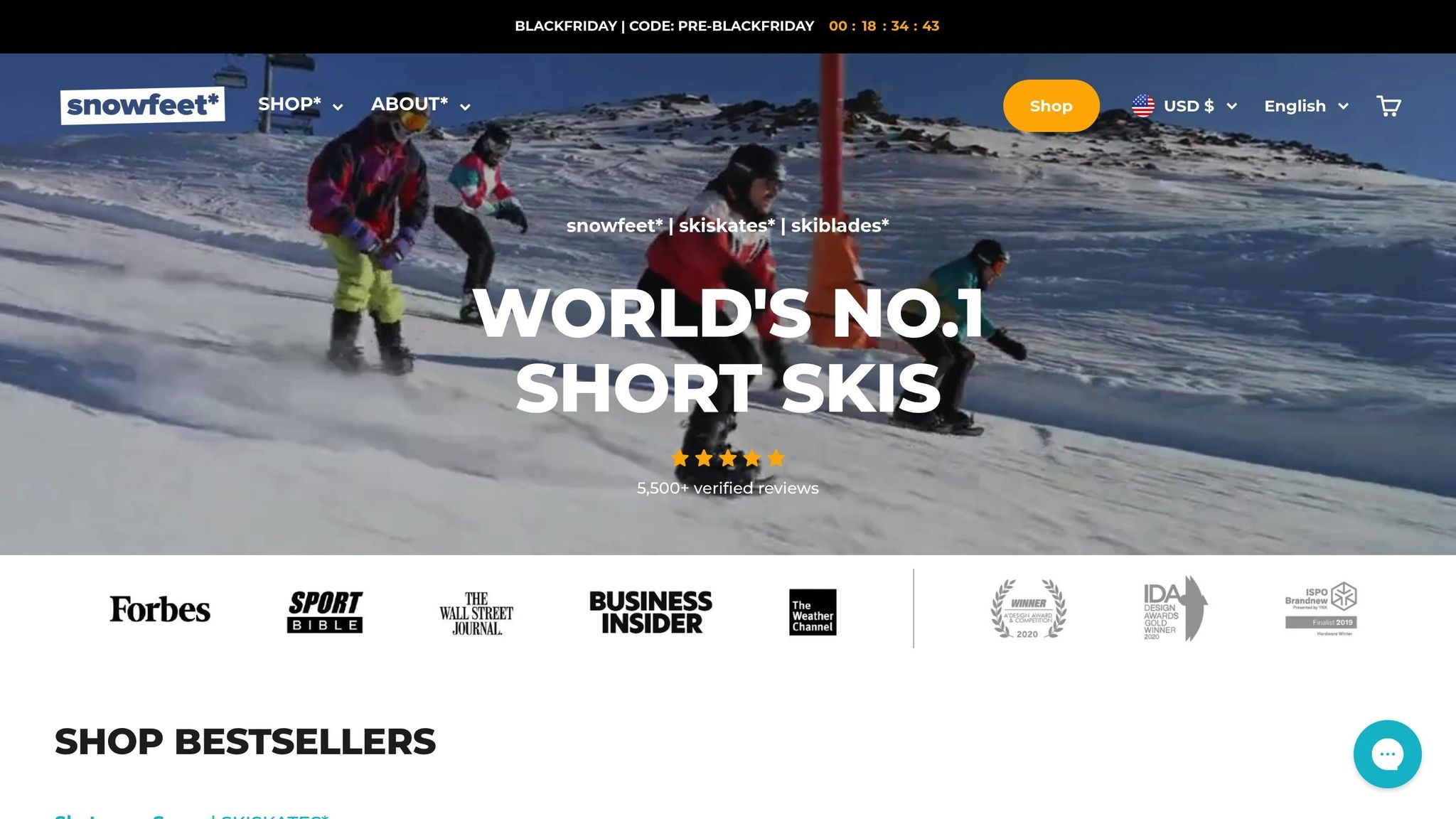
If you're new to backcountry skiing and want to skip the heavy, traditional setups, Snowfeet* Mini Ski Skates (38 cm) and Snowfeet* PRO (50 cm) are great options. These compact skis are much lighter than standard touring skis and work with regular winter shoes, snowboard boots, or ski boots, so you don’t need to invest in specialized footwear.
The Mini Ski Skates (priced around $250) are especially beginner-friendly. Their small size makes them easy to control, and most people can pick up the basics in just a few minutes. Plus, they’re so compact that they fit in a backpack, making uphill climbs and transporting gear a breeze. For those looking for a bit more stability, the Snowfeet* PRO (about $275) offers adjustable bindings and comes in multiple colors.
What makes Snowfeet* stand out? Unlike traditional touring skis from brands like Rossignol or Salomon, these mini skis have a much shorter learning curve. They feel more like skating than skiing, so you can avoid the steep learning process of mastering uphill skinning or downhill control on longer skis. It’s a less intimidating way to start your backcountry journey.
Once you’ve chosen beginner-friendly gear like Snowfeet*, it’s time to focus on safety essentials.
Safety and Navigation Gear
Avalanche safety gear is a must. Don’t even think about heading into the backcountry without it. Here’s what you’ll need:
- Avalanche beacon (e.g., Backcountry Access Tracker3, around $350)
- Snow shovel (like the Black Diamond Transfer, about $65)
- Probe for pinpointing buried objects
These three tools work as a system: the beacon helps locate someone in an avalanche, the probe narrows down their exact location, and the shovel allows for quick digging.
For navigation, bring a mix of old-school and modern tools. A paper map, compass, and GPS are essential backups if your phone loses signal or battery. Practice using them in a safe setting before heading out.
A headlamp with extra batteries is another must-have. Whether you’re starting early, staying out late, or dealing with unexpected delays, good lighting is crucial in the mountains, where conditions can change in an instant.
Once your safety and navigation gear is sorted, make sure your clothing is up to the challenge.
Clothing and Accessories for Beginners
When it comes to dressing for the backcountry, layering is key. The right layers will keep you comfortable and safe as the weather shifts throughout the day. Here’s a simple three-layer system:
- Base layer: Choose moisture-wicking materials to keep sweat off your skin - definitely avoid cotton.
- Mid-layer: Go with fleece or down for insulation. These layers are easy to add or remove as needed.
- Outer shell: A waterproof and windproof jacket will protect you from snow and unpredictable weather.
Don’t forget about your hands, feet, and head:
- Warm gloves or mittens ($30–100, depending on insulation)
- Wool or synthetic socks
- A warm hat or beanie
Since sunlight reflects strongly off the snow, protecting your eyes and skin is essential. Bring goggles or sunglasses, sunscreen, and SPF lip balm to avoid burns or snow blindness.
Pack everything in a 22–40 liter backpack - big enough for safety gear and extra layers but small enough to prevent overpacking. Toss in some snacks, water, and a basic first aid kit with essentials like bandages, blister care, and personal medications.
Lastly, don’t forget a multi-tool or knife for quick fixes and a small roll of duct tape wrapped around your ski poles for emergency repairs.
Budgeting for Beginner Gear
Expect to spend $800–$1,200 for quality beginner gear. To save on costs, consider renting items like avalanche safety equipment at first. This way, you can try backcountry skiing without a huge upfront investment and decide if it’s the right fit for you.
Expert Backcountry Gear Checklist
When you're heading into the backcountry as an expert, your gear needs to be as advanced as your skills. Unlike beginner setups, which focus on simplicity, expert gear is all about precision and cutting-edge technology. Whether you're tackling steep couloirs, navigating deep powder, or embarking on multi-day expeditions in remote areas, every piece of equipment serves a crucial purpose.
Advanced Snowfeet* Models for Experts
Snowfeet* has a lineup of models designed to outperform traditional, bulky touring setups. Here’s a breakdown of their offerings:
- Skiskates (44 cm): Priced at $575, these are built for technical descents. Their wood core construction ensures precise control and quick turns on challenging terrain.
- Skiblades (65 cm and 99 cm): Ranging from $635 to $675, these models shine in deep snow. The 99 cm version offers stability in variable conditions, while the 65 cm option is ideal for tight, technical spots.
- Snowfeet* POWDER (99 cm): At $675, this model is tailored for powder enthusiasts. Unlike traditional powder skis that can exceed 180 cm and weigh you down, this compact design provides excellent float without the heft.
- Short Skis (120 cm): The longest in the Snowfeet* lineup, these are priced at $775. They deliver the speed and stability needed for steep descents while remaining more portable than conventional touring skis.
What makes Snowfeet* stand out? Their versatility. Traditional backcountry skis often force a choice between uphill efficiency and downhill performance. Snowfeet* models handle both with ease, ditching the extra weight and complicated binding systems.
Once you've got your skis sorted, it's time to focus on the safety and technical gear you'll need for expert-level adventures.
Advanced Safety and Technical Gear
For experts, safety gear goes beyond the basics. Here’s what you’ll need:
- Avalanche Airbag Pack: A lifesaver in avalanche scenarios. The Mammut Pro Protection Airbag, priced around $700–$900, is a solid choice.
- Satellite Messenger: In remote areas without cell service, these devices let you send SOS signals and share your location with rescue teams. Essential for solo trips or isolated expeditions.
- Snow Study Kit and Slope Meter: These tools help you assess snowpack stability and measure slope angles, enabling you to make informed decisions about avalanche risks.
- Crampons and Ice Axe: Ski crampons provide grip on hard snow during uphill climbs, while a lightweight ice axe adds security on exposed ridges or steep approaches.
- Two-Way Radios: Communication is key when visibility drops or your group is spread out. Radios keep everyone connected across large terrains.
Technical Clothing and Maintenance Tools
Expert-level trips demand clothing and tools that can handle sudden weather changes and tough conditions. Here's what to pack:
- Layered Gloves: Bring a mix - thin fleece liners for uphill climbs, midweight leather gloves for moderate conditions, and insulated waterproof mittens for cold or stormy descents.
- Shell Garments: Look for jackets and pants with full side zips for ventilation. Prioritize fabrics that balance waterproofing with breathability to handle unpredictable weather.
- Emergency Bivy and Foam Sit Pad: Lightweight and compact, these are lifesavers for unexpected overnight stays or long rest breaks in harsh conditions.
- Repair Kit: Include a multi-tool and Snowfeet* maintenance items like wax and replacement straps. For fiberglass-reinforced polyamide models, waxing boosts speed and glide, while wood core models come pre-waxed.
Your pack should hold 30–40 liters and, if possible, include an integrated airbag system. This size strikes the perfect balance - enough room for safety gear, layers, food, and water without being cumbersome.
While the total investment for expert gear can range from $2,000 to $4,000, it’s worth every penny. The right equipment enhances safety, performance, and reliability when the conditions get tough. Snowfeet* models, in particular, offer a level of versatility and performance that’s hard to match with traditional setups.
Snowfeet* vs Traditional Ski and Snowboard Gear
When it comes to backcountry skiing, traditional long skis and snowboards have been the go-to gear for years. But now, Snowfeet* is shaking things up with their short skis, offering a fresh take on weight, portability, and overall mountain fun. Let’s take a closer look at how Snowfeet* compares to traditional equipment in some key areas.
Comparison Table: Snowfeet* vs Traditional Gear
Here’s a quick breakdown of the differences:
| Feature | Snowfeet* Short Skis/Skates | Traditional Skis/Snowboards |
|---|---|---|
| Weight | Under 3 lbs per pair | 6–8 lbs per pair |
| Length | 38–65 cm | 150–190 cm |
| Portability | Fits in a standard backpack | Requires a ski bag or roof rack |
| Footwear | Works with regular winter boots, snowboard boots, or ski boots | Needs specialized ski/snowboard boots |
| Learning Curve | Basic skills in one session | Often takes several lessons or days |
| Terrain Versatility | Handles groomed runs, parks, tight trees, and technical slopes | Often designed for specific conditions |
| Maintenance | Minimal - just waxing and strap replacement | Regular tuning, edge sharpening, and pro servicing |
| Complete Setup Cost | $250–$775 | $800–$1,500+ |
Why Snowfeet* Stands Out
Lightweight and Portable: One of the biggest perks of Snowfeet* is their weight. At just under 3 lbs per pair, they’re about 50–60% lighter than traditional skis. This means less strain on your legs during long treks and more energy for the fun part - heading downhill. Plus, they’re compact enough to fit in a standard backpack. No need for bulky ski bags or roof racks, making them perfect for public transit, small cars, or even flights without those dreaded oversized baggage fees.
No Fancy Boots Required: Forget shelling out for specialized boots. Snowfeet* works with regular winter boots, snowboard boots, or ski boots. That’s one less thing to buy and carry.
Beginner-Friendly: Traditional skis often come with a steep learning curve, requiring multiple lessons to get the hang of it. Snowfeet* changes the game - most beginners can pick up the basics in just one session. This shorter design also gives you more control, which is especially handy in tricky backcountry terrain.
Versatile Across Conditions: Whether you’re cruising down groomed runs, weaving through tight trees, or tackling technical slopes, Snowfeet* has you covered. They even offer models tailored to specific needs. The Skiskates (44 cm), priced at $575, are perfect for precise descents, while the Skiblades (99 cm), at $675, handle deeper snow like a pro - without the bulk of traditional powder skis.
Low Maintenance: Traditional skis often demand regular edge tuning, base repairs, and trips to the shop. Snowfeet* keeps things simple with just occasional waxing and strap replacements. Less time maintaining, more time shredding.
Budget-Friendly: A full traditional backcountry setup can easily set you back over $800, not to mention the extra costs for boots, bindings, and skins. Snowfeet* offers models ranging from $250 to $775, and you won’t need to spend on additional gear.
Safety Benefits: The shorter, lighter design of Snowfeet* also reduces leverage during falls, which can help minimize injuries.
Whether you’re a beginner looking to build confidence on easier runs or an experienced skier chasing creative lines in technical terrain, Snowfeet* brings a level of versatility and performance that traditional long skis just can’t match.
sbb-itb-17ade95
Terrain-Specific Gear Recommendations
Snowfeet* gear is designed to tackle a variety of backcountry terrains with ease, offering models that cater to specific snow conditions and slope challenges. Whether you're gliding through deep powder or navigating mixed terrain, Snowfeet* has crafted gear that balances performance, control, and versatility. Let’s dive into how their gear handles different terrain demands.
Snowfeet* Gear for Powder and Steep Slopes
When it comes to deep snow and steep descents, having the right gear can make all the difference. Traditional skis often feel bulky and cumbersome, but Snowfeet* gear offers a lightweight alternative that doesn’t compromise on control or flotation.
The Snowfeet POWDER (99 cm), priced at $675, is built for deep snow adventures. Its compact size provides excellent float, making tight turns a breeze compared to longer skis. This model also delivers the stability you need on steep descents, giving you confidence in challenging conditions.
"These skiblades are so much fun and easy to control. Never going back to regular skis." - Andrew B.
In steep backcountry terrain, the smaller design of Snowfeet* gear shines. It’s easier to maneuver in tricky spots like tree wells or narrow couloirs, helping reduce the risk of falls. Plus, the lightweight construction cuts down on fatigue during uphill climbs, making it a practical choice for extended backcountry trips.
Snowfeet* Options for Mixed Conditions and Parks
For those who like variety - think groomed trails, snow parks, and light powder - Snowfeet* offers gear tailored to handle it all. This is where the Skiskates and PRO models really stand out.
The Snowfeet Skiskates (44 cm), starting at $575, are designed for versatility. These "snow skates" glide effortlessly on groomed trails, handle light powder (up to about 4 inches), and even work well on hiking paths. Their compact design makes them ideal for snow parks, where quick turns and playful runs are key.
For a more rugged option, the Snowfeet PRO (50 cm), priced at $275, steps up with adjustable bindings and metal ski edges. This setup ensures secure handling on icy patches and unpredictable terrain, giving you the confidence to tackle mixed conditions.
One of the standout features of Snowfeet* gear is its compatibility with regular winter shoes. No need for bulky ski boots - just hike comfortably to your starting point and switch to your downhill setup in no time. The compact design also makes them perfect for creative runs in terrain parks, where quicker spins and dynamic maneuvers are a must. And when the day’s over, they fit neatly into a standard backpack.
Maintenance is refreshingly simple. Unlike traditional skis that often require professional tuning, Snowfeet* gear only needs occasional waxing and basic care. Their responsive, lightweight design helps you adapt quickly to changing conditions without the hassle of heavy equipment.
Safety and Emergency Gear for All Skill Levels
Backcountry skiing isn’t just about chasing powder - it’s about staying safe while you do it. Whether you’re a first-timer exploring untouched terrain or a seasoned pro tackling steep chutes, proper safety gear is a must. The Colorado Avalanche Information Center reports that 90% of avalanche fatalities happen in recreational settings. Sobering, right? That’s why preparation isn’t just smart - it’s essential.
Carrying the right gear can literally be the difference between life and death. A study in Wilderness & Environmental Medicine found that having a beacon, probe, and shovel boosts avalanche survival rates by up to 60% compared to those without these tools. This isn’t about being overly cautious - it’s about being ready for the unexpected.
Snowfeet* gear offers some practical perks in emergencies, but they’re designed to complement your safety kit, not replace it. Below is a checklist to make sure you’re fully equipped before heading out.
Complete Safety Gear Checklist
Let’s start with the basics - the "big three" avalanche tools. These are non-negotiable for any backcountry trip and are even required by law in some regions:
- Avalanche Beacon: A digital, three-antenna model is your best bet. The Backcountry Access Tracker3 is a popular choice for its long battery life and simple design, typically priced around $350.
- Avalanche Shovel: Look for a sturdy, telescoping shovel. The Black Diamond Transfer, priced at about $65, strikes a good balance between durability and packability.
- Avalanche Probe: Go for one at least 250 cm (98 inches) long that deploys quickly. Expect to spend between $50 and $80 for a reliable model.
But that’s not all. Here’s what else you’ll want in your pack:
- Navigation Tools: Carry a mix of digital and analog options - topographic maps, a compass, a GPS or smartphone with offline maps, and a satellite messenger or two-way radios. Technology can fail, so having a backup is critical.
- Communication Devices: In remote areas with poor cell service, a satellite messenger like the Garmin inReach Mini (priced $300–$400) can be a lifesaver.
- First Aid Kit: Include essentials like bandages, antiseptic wipes, gauze, pain relievers, tweezers, and a CPR face shield. For winter trips, add hand warmers, thermal blankets, and moleskin for blisters.
- Emergency Survival Items: Pack a headlamp with extra batteries, a whistle, a multi-tool or knife, a firestarter (like a lighter or waterproof matches), and an emergency blanket or bivy sack for warmth if you’re stranded.
Here’s a quick reference table to help you prioritize your gear:
| Essential Safety Gear | Beginner Priority | Expert Priority | Typical Price |
|---|---|---|---|
| Avalanche Beacon | Essential | Essential | $350 |
| Avalanche Shovel | Essential | Essential | $65 |
| Avalanche Probe | Essential | Essential | $50-$80 |
| First Aid Kit | Essential | Essential | $25-$60 |
| Navigation Tools | Essential | Essential | $100-$200 |
| Satellite Messenger | Recommended | Essential | $300-$400 |
| Avalanche Airbag Pack | Optional | Recommended | $700-$1,200 |
| Emergency Blanket | Essential | Essential | $10-$20 |
Training: The Missing Piece
Having the right gear is only half the battle - you’ve got to know how to use it. Avalanche safety courses like AIARE Level 1, wilderness first aid training, and navigation workshops are invaluable. Many accidents happen not because of faulty gear but because people don’t practice using it. Make time to rehearse beacon searches, check your gear’s battery levels, and ensure you’re comfortable with everything in your kit.
Common missteps? Skipping equipment inspections, neglecting to practice with avalanche tools, and forgetting backup navigation options. Double-check your gear before every trip - it’s a small step that can make a huge difference.
And remember, Snowfeet* products are a great addition to your pack, offering mobility and saving space. But they’re not a substitute for the essentials. Prioritize safety first, so you can enjoy the adventure with peace of mind.
Conclusion: Choosing the Right Backcountry Gear
Picking the right gear for backcountry adventures comes down to matching your equipment to your skill level, the terrain you’ll tackle, and your personal needs. Whether you’re just starting out or you’ve been climbing uphill for years, having the right setup can completely change your experience on the mountain.
For beginners, options like Snowfeet Mini Ski Skates and PRO models are a great starting point. They’re lightweight and easy to use, making them perfect for learning without the exhaustion that heavier gear can bring. Plus, their compact design works with regular winter boots, so you can skip the hassle of specialized footwear.
If you’re more experienced, you’ll likely need gear that can handle tough conditions and technical terrain. This might include a 30–40 liter pack loaded with avalanche airbag systems and tools. Advanced Snowfeet models, such as the Skiskates or 99 cm Skiblades, are designed to deliver precision and control when it matters most. Their streamlined design not only enhances performance but also reduces the physical strain of long ascents, offering a blend of beginner-friendly simplicity and expert-level precision.
Here’s where Snowfeet really stands out. Unlike traditional ski brands that focus on long, heavy skis, Snowfeet proves that smaller, more agile designs can be a game-changer. Their mini ski skates and skiblades are incredibly portable - you can even toss them in your backpack. And since they work with your regular winter boots, there’s no need to splurge on bulky, specialized footwear.
The lightweight build of Snowfeet gear minimizes fatigue on extended climbs and offers excellent maneuverability, especially in tight or technical terrain. Instead of needing separate setups for powder, mixed conditions, or park features, Snowfeet products adapt to a variety of terrains with ease. Their shorter length makes navigating through trees and tricky sections much simpler, where traditional long skis might feel cumbersome.
Of course, safety gear is non-negotiable. The Colorado Avalanche Information Center reported 37 avalanche-related fatalities during the 2022–2023 season. This highlights why having the right safety equipment is just as crucial as your choice of skis.
From $250 beginner-friendly Mini Ski Skates to $675 advanced 99 cm Skiblades, Snowfeet offers a progression that grows with your skills. It’s often a more budget-friendly option compared to traditional backcountry setups, which can get expensive fast when you factor in all the extras. With their versatility and ease of use, Snowfeet is a solid choice for anyone, whether you’re just starting out or tackling expert-level runs.
FAQs
How does Snowfeet gear compare to traditional skis for backcountry skiing?
Snowfeet* gear takes a fresh approach to skiing with shorter, more adaptable designs that are lightweight and easy to use. Unlike traditional skis that demand precise sizing and can be tricky for beginners, Snowfeet* products are built for everyone - whether you're just starting out or already a seasoned skier.
What makes Snowfeet* special? They let you explore backcountry trails without the hassle of bulky, long skis. By rethinking the need for length, Snowfeet* proves that short skis can deliver more fun, agility, and convenience. Whether you choose Snowfeet* Mini Ski Skates, Skiblades, or Skiskates, these compact options offer a modern, adventurous twist for today’s winter sports lovers.
How does Snowfeet gear improve safety and performance for backcountry skiers at all skill levels?
Snowfeet* gear brings a fresh twist to backcountry skiing, focusing on both safety and performance. Whether you're just starting out or you’ve been skiing for years, their lineup - featuring mini ski skates and skiblades - offers a fun and versatile way to hit the snow. The best part? You can use them with regular winter shoes, snowboard boots, or ski boots.
Unlike traditional long skis, Snowfeet* products are compact and designed for agility. This makes them perfect for tackling all kinds of terrain. Beginners will appreciate the shorter learning curve, while seasoned skiers can enjoy the added challenge and freedom. Thanks to their innovative approach, Snowfeet* makes winter adventures more accessible and enjoyable for everyone.
What safety gear do I need for backcountry skiing, and how can I stay prepared for emergencies?
Safety should always be your top priority when venturing into the backcountry. Make sure you’re equipped with the basics: an avalanche beacon, probe, and shovel. These tools are essential for locating and rescuing others in the event of an avalanche. It’s also smart to pack a first-aid kit, a multi-tool, and an emergency blanket - these can be lifesavers in unexpected situations. And, of course, you’ll need a sturdy, comfortable backpack to carry everything.
For those just starting out, lightweight and portable gear like Snowfeet Mini Ski Skates can be a total game-changer. Unlike traditional skis, their compact design makes them easier to handle, especially if things get tricky, while still delivering a fun experience on the slopes. If you’re more experienced, Snowfeet Skiboards might be your go-to for better versatility and control on tougher terrain.
Before you head out, always check the weather, bring a map or GPS, and let someone know your plans. A little preparation goes a long way in keeping your adventure safe and enjoyable.
Related Blog Posts
- Intro to Light Backcountry: Essential Gear for Exploring Beyond the Groomed Trails (Without the Pro Setup)
- How to Choose Skis for Backcountry Beginners (Safety First!) - 2025
- First Backcountry Ski Tour: What to Expect (Step-by-Step Walkthrough)
- Best Ski Destinations for Different Skill Levels (Beginner, Intermediate, Expert)







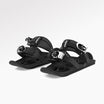
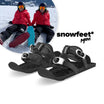
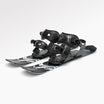
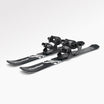

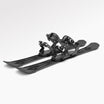

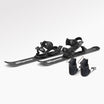






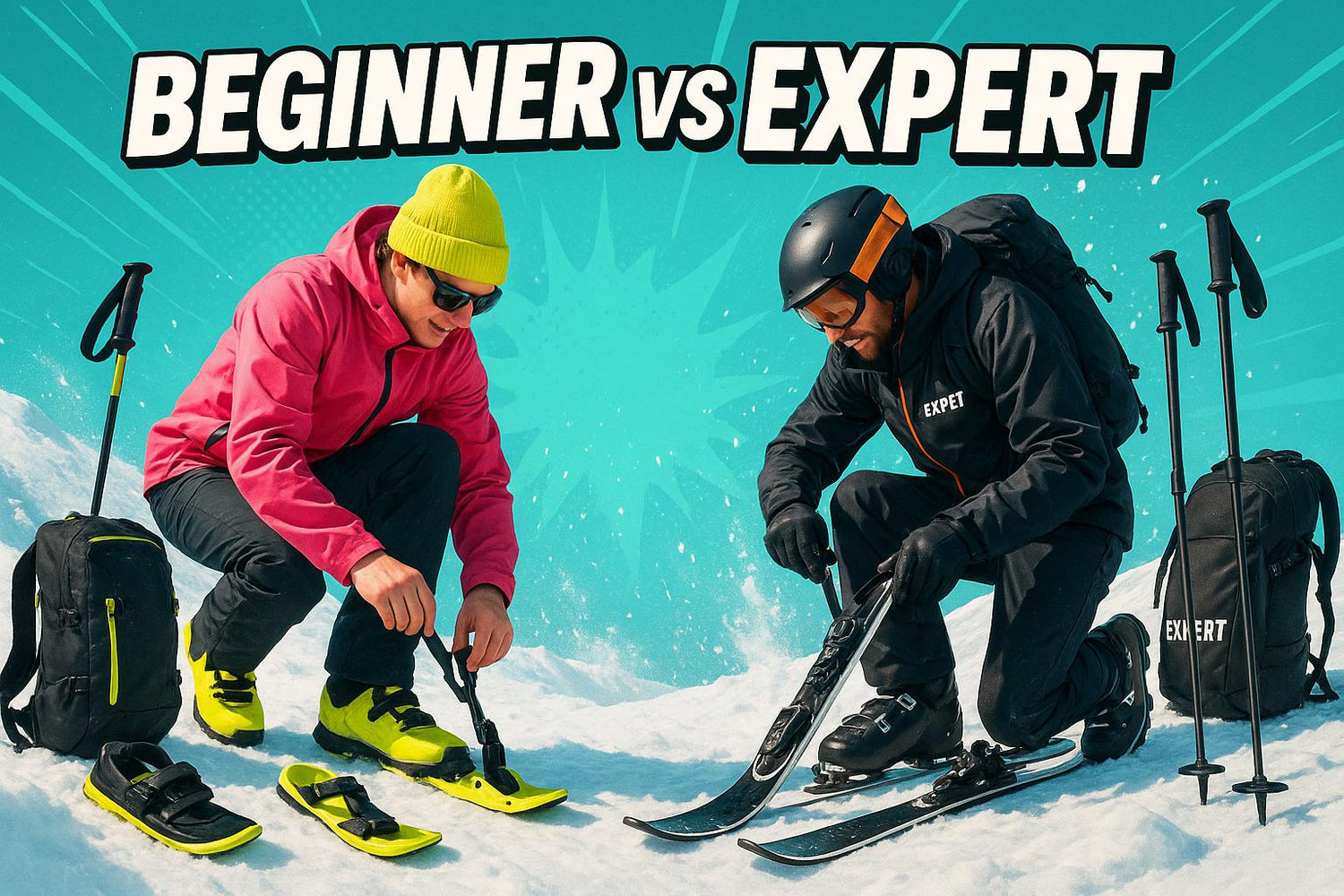

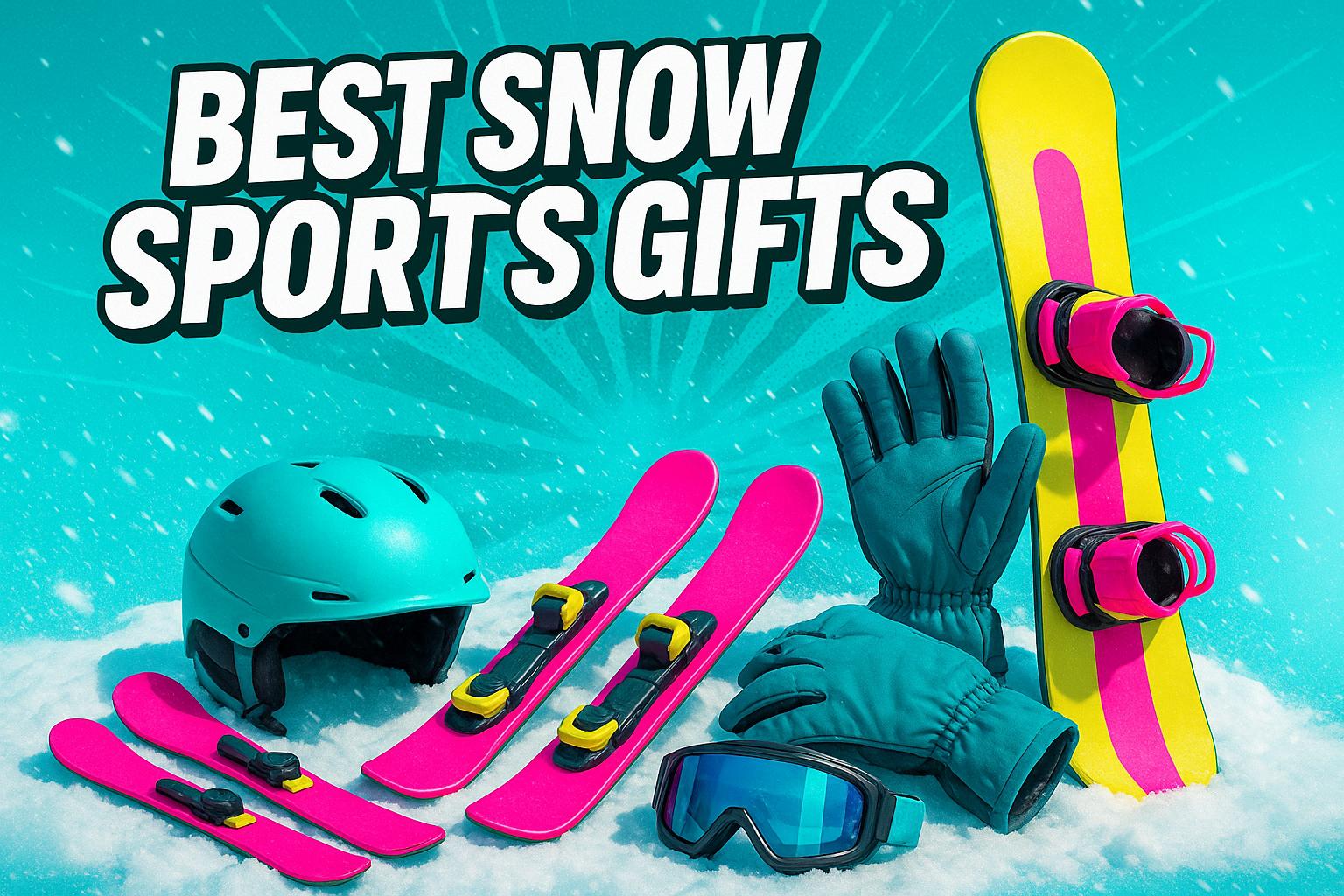




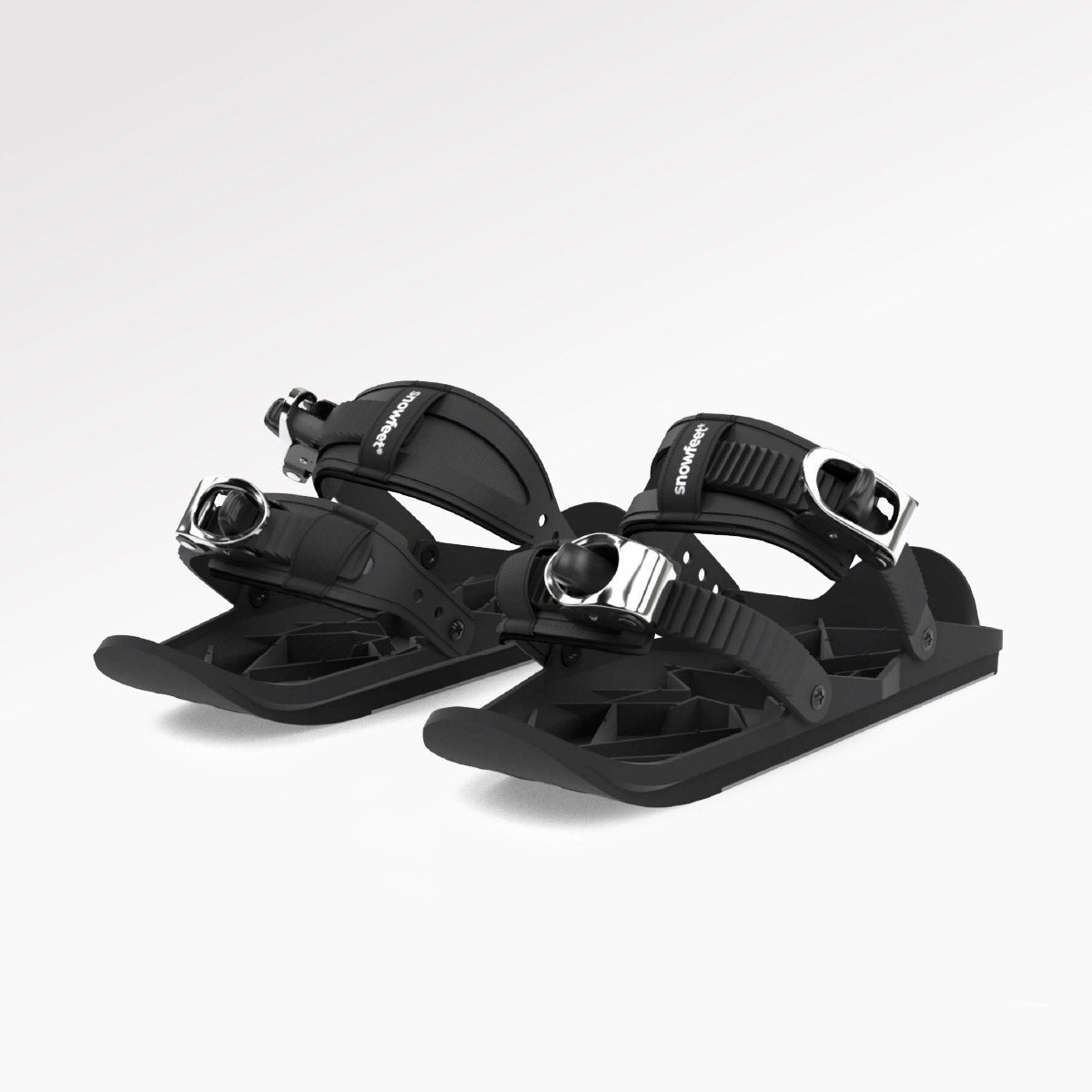
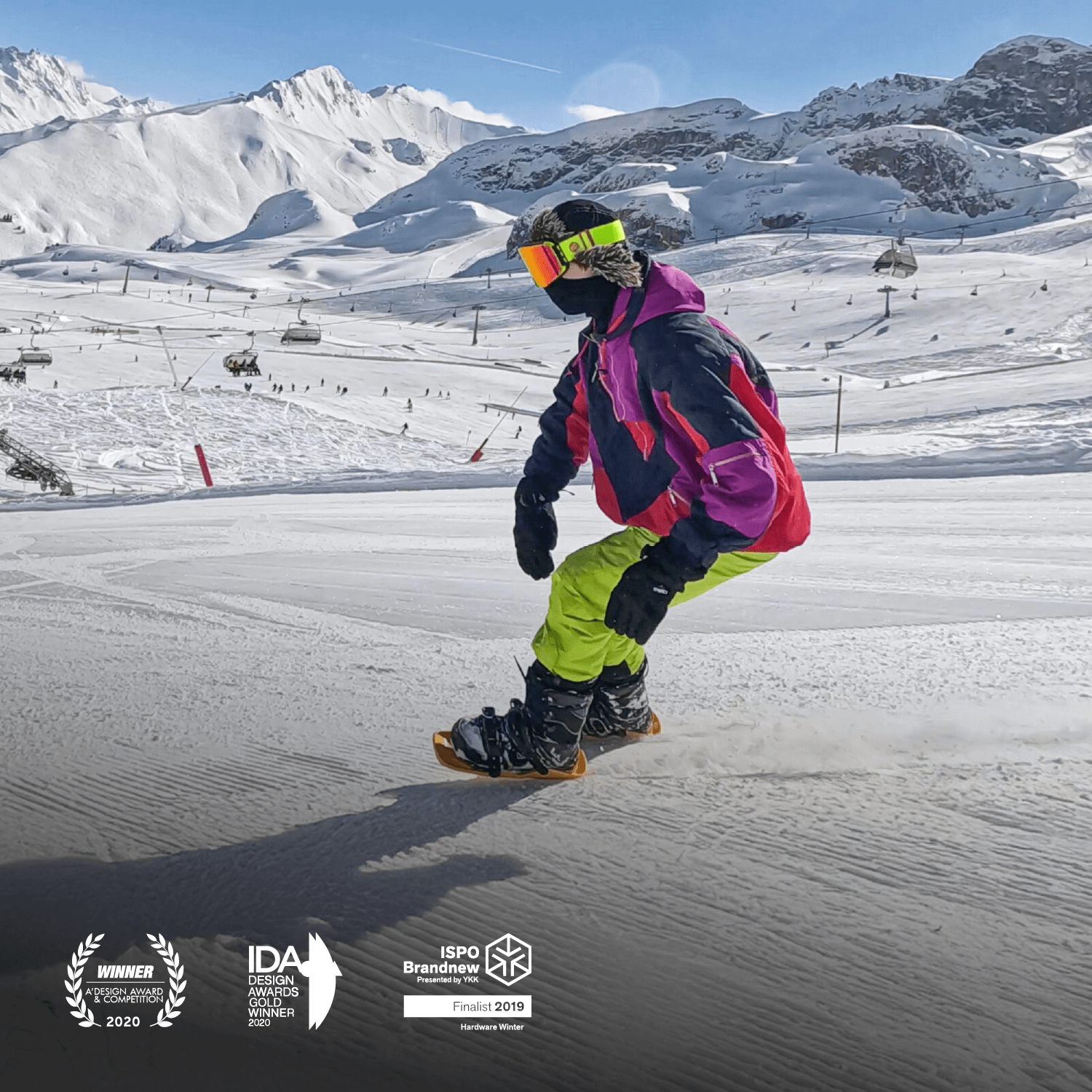
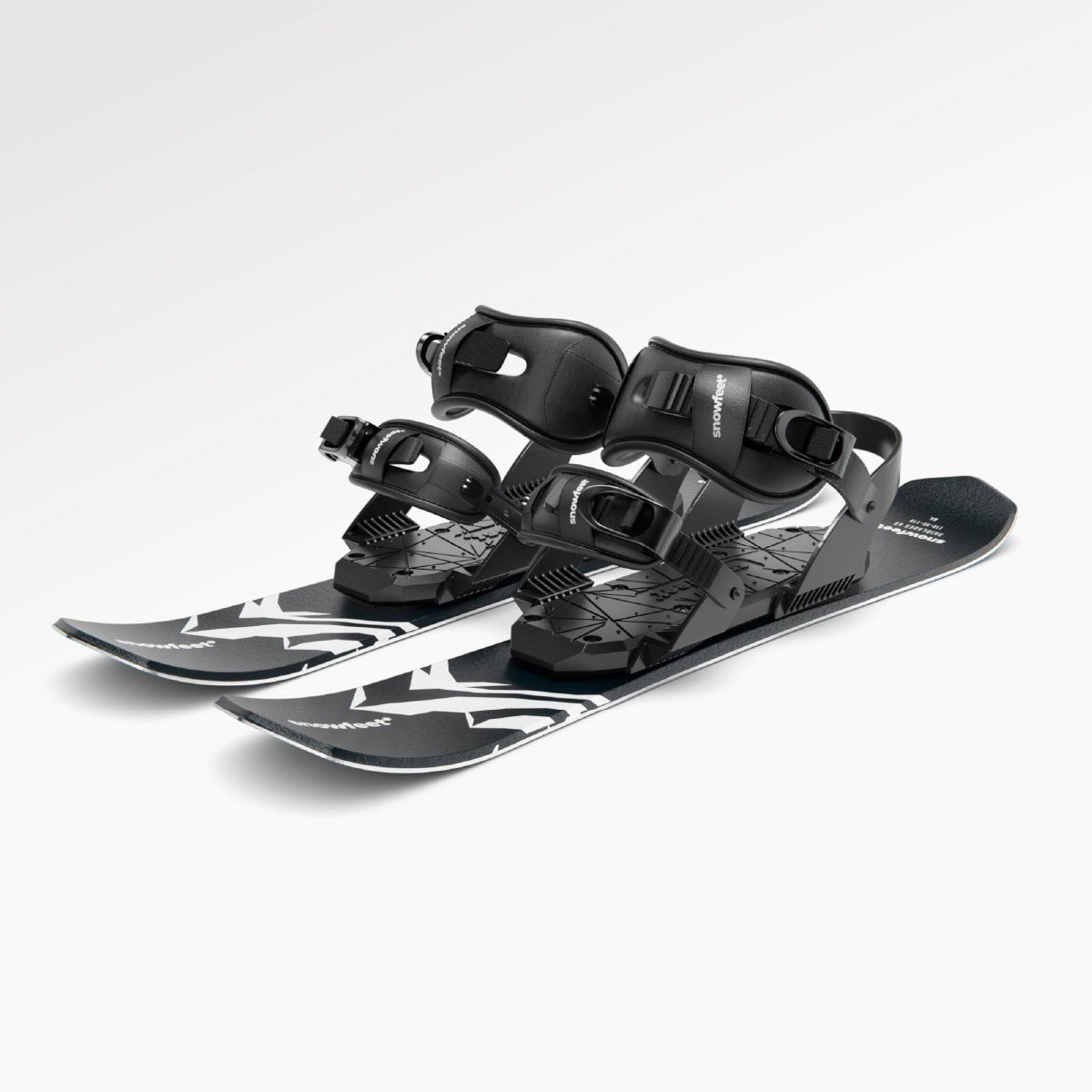

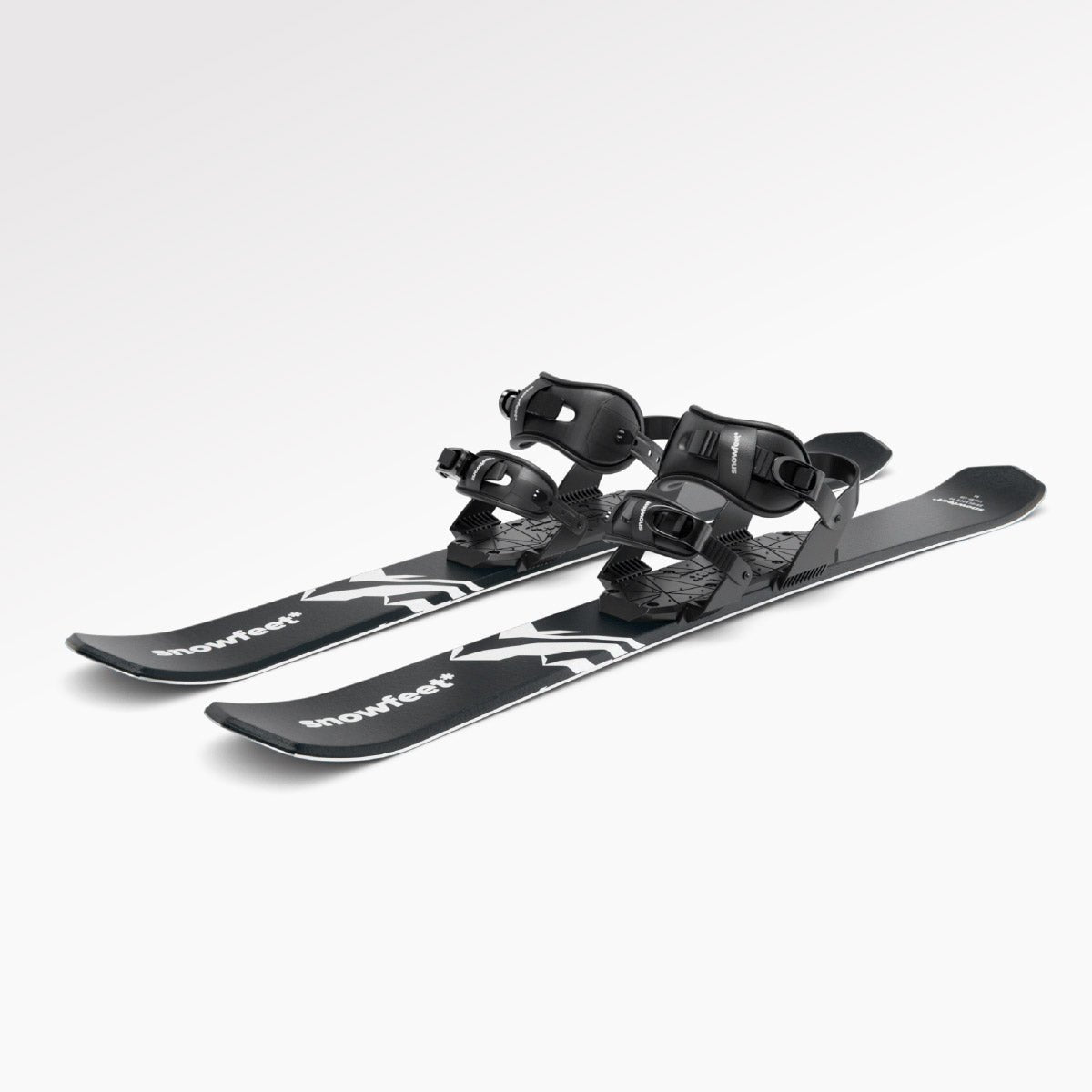

Leave a comment
This site is protected by hCaptcha and the hCaptcha Privacy Policy and Terms of Service apply.